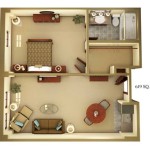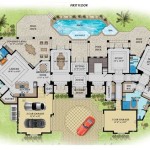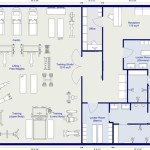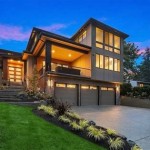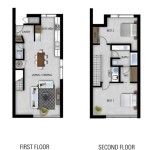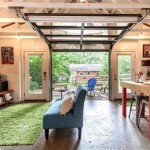House Plans Under $150,000 To Build: Affordable Dream Homes
The pursuit of homeownership is a significant goal for many individuals and families. However, the escalating costs of land, materials, and labor can present substantial financial hurdles. The concept of building a house for under $150,000 may seem unattainable in some markets, but careful planning, strategic choices, and a focus on efficient designs can make it a reality.
The viability of constructing a house within this budget hinges on several key factors, including location, size, design complexity, material selection, and the utilization of specific building techniques. A rural location, where land prices are typically lower, offers a distinct advantage. Similarly, opting for a smaller, simpler house plan with minimal ornamentation and a straightforward layout can significantly reduce construction costs. Choosing cost-effective materials, such as manufactured siding, pre-engineered trusses, and readily available fixtures, is crucial for staying within budget. Furthermore, considering alternative building methods, like prefab construction or modular homes, can offer substantial savings in both time and money.
This article explores the possibilities of constructing a house with plans under $150,000, highlighting key considerations and providing practical strategies for individuals seeking to achieve affordable homeownership. It will delve into the various elements that contribute to overall construction expenses and offer guidance on how to make informed decisions that align with budgetary constraints.
Understanding the Key Cost Drivers
Successfully building a house within a limited budget requires a comprehensive understanding of the various factors that contribute to overall construction costs. These expenses can be broadly categorized into several key areas, each of which needs careful consideration.
Land Acquisition: The cost of land is often the most significant expense in the building process. Location plays a crucial role, with urban and suburban areas typically commanding much higher prices than rural locations. Consider exploring less developed areas or smaller lots to potentially reduce this initial outlay. Factor in the cost of preparing the land as well, as clearing, grading, and excavation can add to the overall expense.
Foundation: The foundation provides the structural base for the entire house. The type of foundation chosen (slab-on-grade, crawl space, or basement) significantly impacts the cost. Slab-on-grade foundations are generally the most affordable, while basements are typically the most expensive due to the added excavation and waterproofing requirements. Climate and soil conditions will heavily influence the most appropriate and cost-effective foundation type for the specific location.
Framing: Framing involves the construction of the structural skeleton of the house, including walls, floors, and roof. Lumber prices fluctuate, so it's essential to monitor market trends and potentially purchase materials when prices are favorable. Utilizing pre-engineered trusses for the roof can be a more cost-effective option than stick-built framing, as they reduce labor costs and material waste.
Exterior Finishes: The exterior finishes, including siding, roofing, windows, and doors, contribute significantly to the overall aesthetics and protection of the house. Opting for cost-effective materials, such as vinyl siding or asphalt shingles, can help keep expenses in check. Explore energy-efficient windows and doors, as they can lead to long-term savings on utility bills.
Interior Finishes: Interior finishes encompass a wide range of elements, including flooring, drywall, paint, trim, cabinets, countertops, and fixtures. These items can vary widely in price, so careful selection is crucial. Consider laminate flooring as a cost-effective alternative to hardwood, and explore stock cabinets and countertops instead of custom-made options. Prioritize essential finishes and consider upgrading certain elements later as budget allows.
Mechanical Systems: Mechanical systems include plumbing, electrical, and HVAC (heating, ventilation, and air conditioning). These systems are essential for comfortable and functional living. Obtain multiple quotes from qualified contractors and compare prices carefully. Consider energy-efficient HVAC systems, as they can reduce long-term operating costs. Simple plumbing layouts can also help minimize expenses.
Labor Costs: Labor costs can account for a significant portion of the overall construction budget. Obtaining multiple bids from qualified contractors is essential to ensure competitive pricing. Consider acting as your own general contractor, if you have the necessary skills and experience, to potentially save on contractor fees. However, be aware that this option requires significant time commitment and expertise.
Permits and Fees: Building permits and related fees are required by local authorities to ensure compliance with building codes and regulations. These fees can vary depending on the location and the size and complexity of the project. Budget for these expenses upfront to avoid unexpected costs.
Strategies for Minimizing Construction Costs
Once the key cost drivers are understood, implementing strategies to minimize expenses becomes paramount. Here are several actionable approaches to consider:
Choose a Simple House Plan: Opting for a simple, rectangular or square house plan is significantly more cost-effective than complex designs with multiple angles, dormers, or curves. Simpler designs require less material and labor, resulting in substantial savings. One-story ranch-style homes are often more affordable to build than two-story homes due to easier framing and fewer structural requirements.
Reduce the Square Footage: The size of the house directly impacts the overall construction costs. Consider building a smaller house that meets your essential needs rather than opting for excessive space. Prioritize functionality and efficient use of space to maximize the living area within a smaller footprint. Minimize hallways and unused areas to optimize the use of available square footage.
Utilize Cost-Effective Materials: Carefully select building materials that offer a balance of affordability and durability. Consider manufactured siding, such as vinyl or fiber cement, as a cost-effective alternative to brick or stone. Opt for asphalt shingles for roofing, as they are generally more affordable than tile or metal. Explore reclaimed or recycled materials to potentially save money and reduce environmental impact.
Consider Prefab or Modular Homes: Prefabricated or modular homes are built in a factory and then transported to the building site for assembly. This construction method can offer significant cost savings compared to traditional stick-built construction due to economies of scale and reduced labor costs. Modular homes can also be completed more quickly than traditional construction.
DIY (Do-It-Yourself) Options: If you have the necessary skills and experience, consider undertaking certain tasks yourself to save on labor costs. Painting, landscaping, and some aspects of interior finishing can be completed by homeowners with basic DIY skills. However, it's essential to be realistic about your abilities and avoid attempting tasks that require specialized knowledge or equipment, as mistakes can be costly.
Shop Around for Materials and Labor: Obtain multiple quotes from suppliers and contractors to ensure you are getting the best possible prices. Compare prices carefully and negotiate where possible. Consider purchasing materials in bulk to potentially save on unit costs.
Prioritize Energy Efficiency: Investing in energy-efficient features, such as insulation, windows, and appliances, can lead to long-term savings on utility bills. Consider installing a high-efficiency HVAC system and energy-efficient lighting. Proper insulation can significantly reduce heating and cooling costs.
Navigating House Plans and Design Choices
The selection of a suitable house plan is a critical step in the building process. Choose a plan that aligns with your budget, lifestyle, and aesthetic preferences. Here are some key considerations:
Plan Costs: House plans can range in price from free online options to custom designs created by architects. Free plans may be limited in detail and may not meet local building codes. Stock plans offer a more comprehensive option at a lower cost than custom designs. Consider purchasing a stock plan that can be modified to suit your specific needs.
Design Complexity: As previously mentioned, simpler designs are generally more affordable to build. Avoid complex rooflines, intricate floor plans, and excessive ornamentation. Opt for a straightforward layout with minimal hallways and efficient use of space.
Room Sizes and Layout: Carefully consider the size and layout of each room to ensure it meets your needs. Avoid oversized rooms that are not necessary. Open floor plans can create a sense of spaciousness and can be more cost-effective to build than separate, enclosed rooms.
Material Choices: Review the material specifications in the house plan and consider alternative, more cost-effective options where possible. Consult with a builder or contractor to determine the best materials for your budget and climate.
Local Building Codes: Ensure that the house plan complies with all local building codes and regulations. This is crucial for obtaining building permits and ensuring the safety and structural integrity of the house. Consider hiring a local architect or engineer to review the plan and ensure compliance.
Future Expansion: If you anticipate needing more space in the future, consider choosing a house plan that allows for future expansion. This could involve designing the house to accommodate a second story or adding an addition later on. Planning for future expansion can be more cost-effective than building a larger house initially.
Building a house for under $150,000 requires careful planning, strategic decision-making, and a commitment to cost-effective design and construction practices. By understanding the key cost drivers, implementing strategies to minimize expenses, and choosing a suitable house plan, individuals can achieve their dream of affordable homeownership.

3 Family Friendly Floor Plans Under 150 000 Wayne Homes

Modern And Spacious House Plan

House Plans Under 150k To Build Check More At Https Bradshomefurnishings Com Floor Ranch Basement

Contemporary Home Ch268 Coastal House Plans How To Plan New

Small House 150k Budget 7 X 6 Meters In Mediterranean Style Modern Design Model Plan

House Plan Ch399

3 Family Friendly Floor Plans Under 150 000 Wayne Homes

5 Stylish Prefab Modular Homes Under 150k Build In 24 Hrs

3 Bedroom Low Cost Home Design In 1073 Square Feet With Free Plan Kerala Plans New House Budget 2bhk

Small House Plan Ch150

